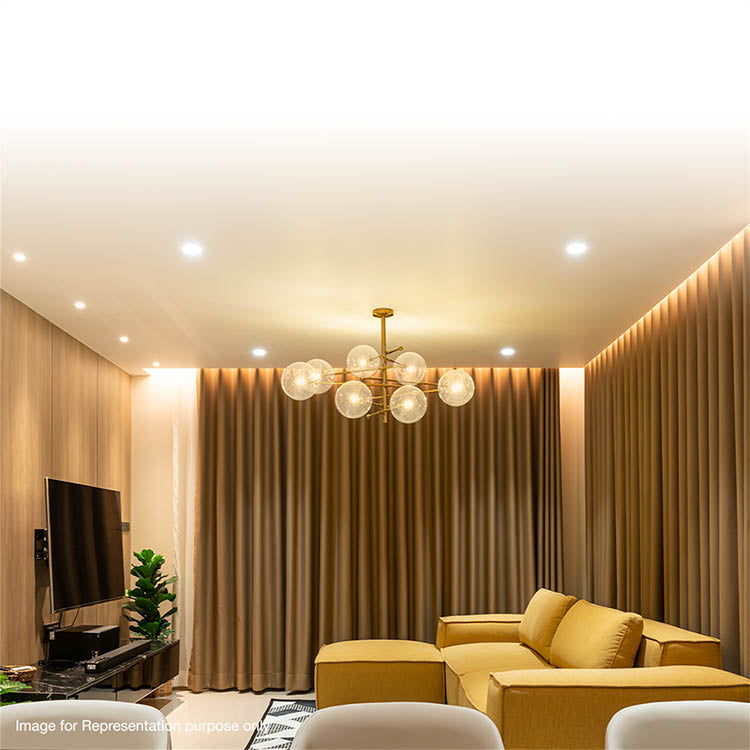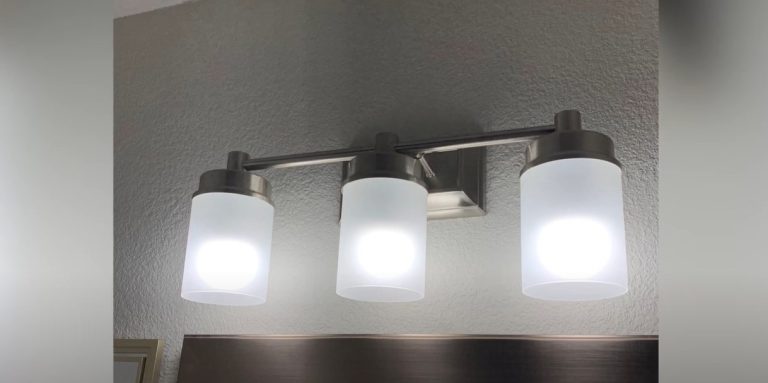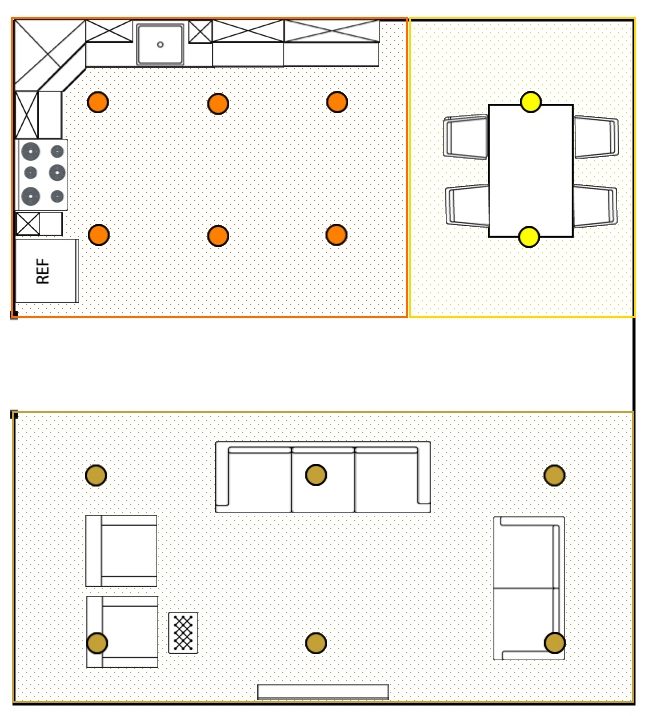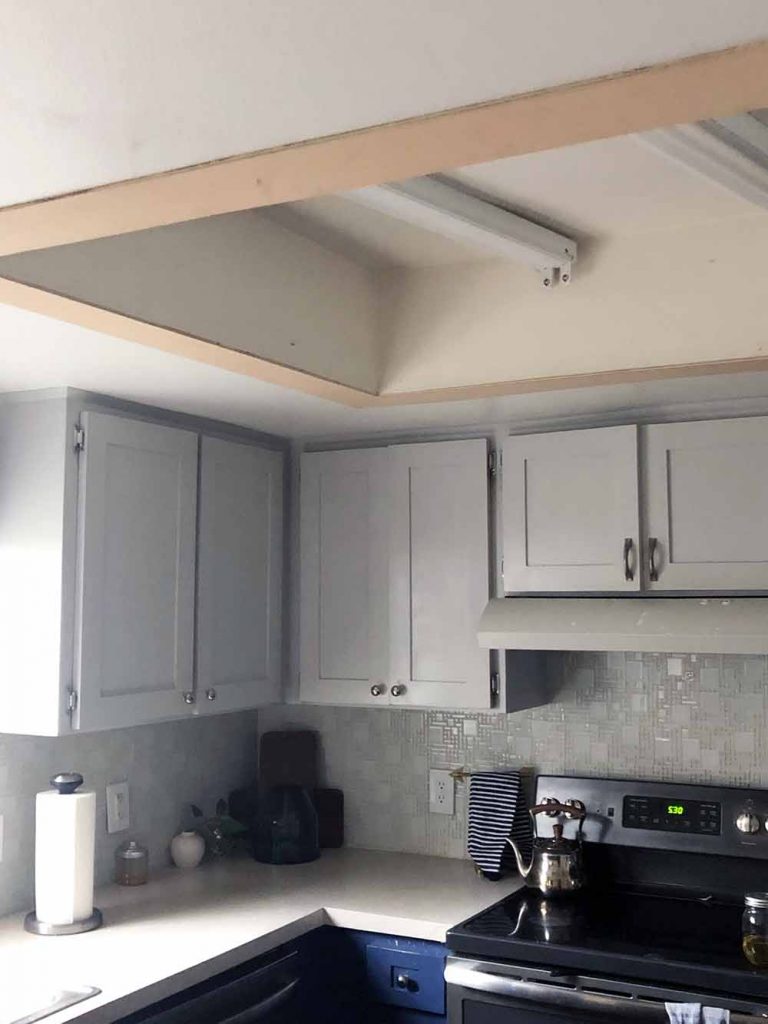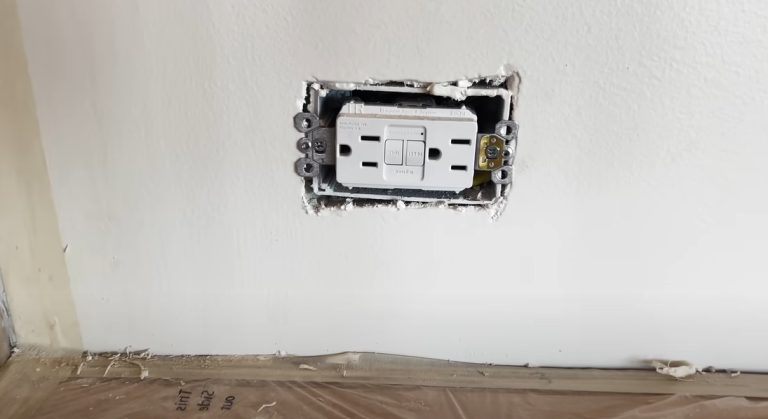How Many Can Lights Per Room? Expert Lighting Guide
How many can lights per room? Use one can light for every 4 to 6 square feet of ceiling space. For example, a 12×12 room (144 sq ft) typically needs 6 to 9 can lights. Adjust based on room function, ceiling height, and light fixture type for balanced illumination.
You feel comfortable, relaxed, and ready to enjoy the space. The secret to achieving this perfect ambiance often lies in the number of can lights you choose to install. But how do you determine the right number for your room?
If you’ve ever found yourself pondering this question, you’re not alone. The balance of lighting can transform a room from ordinary to extraordinary, and it’s all about getting the numbers right. We’ll guide you through the essentials of can lighting, helping you make the best decision for your home. Ready to light up your space just the way you want? Let’s delve into the details together!
How Many Can Lights Per Room?
Room Size Considerations
Determining the number of can lights depends on room size and purpose. Larger rooms often need more lighting to ensure brightness throughout. Placement impacts overall ambiance, making it crucial to consider furniture arrangement and ceiling height for effective illumination.
Choosing the right number of can lights for your room is not a one-size-fits-all task. Room size plays a crucial role in this decision, impacting both the aesthetic and functional aspects of your lighting design. Understanding your room’s dimensions can help you create a well-lit space that meets your needs.
Read more: What Light in a Dark Room Helps You Study? Bright Ideas
Small Rooms
In small rooms, fewer can lights are needed. Typically, two to four lights might suffice. This ensures that the space is well-lit without overwhelming it.
Consider the height of the ceiling. If your small room has a lower ceiling, you might want fewer lights to avoid harsh lighting.
Medium Rooms
Medium-sized rooms usually require between four to six can lights. This provides a balanced distribution of light across the space.
Think about the room’s purpose. A medium-sized living room might benefit from a few extra lights compared to a bedroom of the same size.
Large Rooms
Larger rooms demand more lighting coverage. You might need six to eight or even more lights, depending on the room’s use.
Focus on key areas. In large living spaces, ensure that seating areas, workspaces, and walking paths are well-lit.
Ceiling Height Impact
Ceiling height can dramatically affect how many lights you need. Higher ceilings may require more lights to achieve the same level of brightness as a room with lower ceilings.
Adjust the spacing of your lights. For high ceilings, consider placing lights closer together to ensure even illumination.
Personal Experience
When I renovated my home office, I underestimated the role of room size in lighting. Initially, I installed just four can lights in a medium-sized room with high ceilings. The corners remained dim, impacting my work efficiency.
After adjusting and adding two more lights, the space felt brighter and more inviting. It taught me the importance of considering room dimensions and ceiling height in lighting decisions.
Next time you plan your lighting, ponder on how room size can alter your decisions. Are you optimizing your room’s potential with the right number of can lights? Understanding these factors can enhance your living space significantly. Adjust your lighting thoughtfully and let your room shine to its fullest!
Read More: Lights in Lounge Room: Transform Your Space Instantly
Types Of Can Lights
When planning the perfect ambiance for your room, understanding the types of can lights available is crucial. Can lights, also known as recessed lights, are a versatile lighting option that can dramatically transform your space. They are sleek and unobtrusive, fitting seamlessly into any room design. But with so many types to choose from, how do you decide which is best for your room?
Standard Can Lights
Standard can lights are the most common type you’ll find in homes. They are affordable and easy to install. These lights are perfect for general lighting purposes, providing a broad spread of illumination across the room. You might have noticed them in a friend’s living room, casting a soft, even glow.
Think about your living space. Would standard can lights enhance your room’s ambiance? They are excellent for areas where you need consistent lighting, like kitchens or hallways.
Adjustable Can Lights
Adjustable can lights offer flexibility in directing light. They allow you to focus the beam on specific areas or objects, like a piece of art or a reading nook. These lights can be tilted or swiveled, providing a dynamic lighting option.
If you’re someone who loves rearranging your furniture or artwork, adjustable can lights might be your best bet. Do you have a corner that needs a little extra attention? These lights can help highlight those spots.
Shower Can Lights
Shower can lights are designed for wet environments. They are water-resistant and safe for use in bathrooms. These lights are ideal for providing bright, clear lighting that helps you see better while getting ready.
Have you ever struggled with dim lighting in your bathroom? Shower can lights can solve that problem, ensuring you have the perfect illumination for your morning routine.
Ic Rated Can Lights
IC rated can lights are essential for spaces with insulation. They are designed to prevent overheating, making them safe for use in insulated ceilings. These lights are a smart choice for attics or areas with tight spaces.
Consider this: is your ceiling insulated? If yes, IC rated can lights offer a safe and efficient lighting solution that won’t compromise the safety of your home.
Choosing the right type of can lights can make a significant difference in how you experience your space. Whether you need standard lights for general use or specialized ones for unique situations, understanding your options is key. What type of can lights will best suit your room’s needs?
Calculating Light Requirements
Determining the right number of can lights for a room depends on its size and purpose. A small room may need fewer lights, while larger spaces require more to ensure even illumination. Consider spacing, brightness, and ceiling height to achieve optimal lighting balance.
Calculating the right number of can lights for a room can seem like a daunting task. But understanding your light requirements is simpler than you might think. The key is to balance brightness and efficiency, ensuring every corner of your room is well-lit without overwhelming your space. Let’s dig into the details.
Understanding Room Purpose
The first step is considering the room’s purpose. Are you lighting a kitchen, where bright task lighting is essential? Or a cozy living room, where softer lighting is more appropriate? Different rooms have different lighting needs.
For a kitchen, you might aim for 70-100 lumens per square foot. In contrast, a bedroom or living room might only need 10-20 lumens per square foot. Tailor your lighting to suit the room’s function.
Calculating Square Footage
You’ll need to calculate the room’s square footage to determine how many can lights are needed. Measure the length and width of the room. Multiply these numbers to get the total square footage.
For example, if your room is 12 feet by 15 feet, the total square footage is 180. This number will help you calculate the total lumens required for the space.
Determining Lumens Needed
Once you know the square footage, you can determine the lumens required. Multiply the square footage by the lumens per square foot needed for the room type.
Using the earlier example of a 180 square foot room, if you need 10 lumens per square foot, you’ll need 1,800 lumens total. This will guide you in choosing the number of lights.
Choosing The Right Bulbs
Selecting the right bulbs is just as important as the number of lights. LED bulbs are energy-efficient and long-lasting, making them a great choice.
Consider the bulb’s brightness, measured in lumens, and its color temperature. A higher color temperature (measured in Kelvin) gives a cooler, bluer light, while a lower temperature provides a warmer, yellower glow.
Spacing Your Can Lights
Proper spacing ensures even lighting and avoids shadows. A good rule of thumb is to divide the ceiling height by two to determine spacing.
For instance, if your ceiling is 8 feet high, space your lights about 4 feet apart. This creates a balanced look, preventing both overly bright and dim areas.
Adjusting For Personal Preference
While calculations are helpful, personal preference plays a role too. You might prefer a brighter space or a softer ambiance.
Consider dimmer switches for adjustable lighting. This flexibility allows you to tailor the room’s brightness based on your mood or the time of day.
Testing And Adjusting
Once installed, take the time to test your lighting. Walk around the room and observe how the light interacts with the space.
Are there any dark spots or areas that feel too bright? Adjust as needed, moving lights or changing bulbs to create the perfect environment.
Have you ever walked into a room and felt instantly comfortable? Often, it’s the lighting doing the magic. How will you light your next room to create that perfect atmosphere?

Credit: diy.stackexchange.com
Placement Tips
Determining the right number of can lights per room involves considering the room’s size and purpose. For adequate lighting, spacing them evenly and avoiding shadows is key. Typically, one can light per four to six square feet is ideal for balanced illumination.
Proper placement of can lights is crucial for achieving the perfect ambiance in any room. While deciding how many can lights you need, it’s equally important to think about where to place them. The right placement can transform a space, making it feel warm and inviting or cool and modern.
Consider The Room’s Function
Think about what activities will take place in the room. In a kitchen, you might need more focused lighting for cooking tasks. In a living room, softer lighting may create a cozy atmosphere.
Space Evenly For Balanced Light
Spacing your can lights evenly can help avoid dark corners or overly bright spots. A good rule of thumb is to space them about 4 to 6 feet apart. This can vary depending on the size of the room and the intensity of the bulbs.
Avoid Shadows With Strategic Placement
Shadows can make a room feel smaller and less inviting. Place can lights strategically to minimize shadows, particularly in rooms like bathrooms or dressing areas. Adjust the direction of the lights to ensure an even spread.
###
Highlight Key Features
Do you have a favorite painting or an architectural feature you love? Use can lights to highlight these areas. Focusing light on key elements can draw attention and create visual interest.
Experiment With Angles
Who says can lights have to be boring? Try angling some of your lights to add drama or focus to a room. This small adjustment can make a big difference in how a space feels.
Think About Layering
Layering light means using a combination of can lights, pendant lights, and lamps. This technique can add depth and dimension to a room. It allows you to adjust the lighting based on your mood or activity.
Use Dimmers For Flexibility
Installing dimmers with your can lights gives you control over the room’s ambiance. Want a romantic dinner? Dim the lights. Need bright light to read? Turn them up. Dimmers are a versatile addition to any lighting setup.
Test Before Finalizing
Before you finalize the position of your can lights, test different placements. Move around the room and see how the light affects each area. This trial and error approach can lead to the best results.
Trust Your Instincts
Ultimately, trust what feels right for you and your space. Every room is unique, and so are your needs. If something feels off, adjust it until it feels just right.
How do you plan to arrange can lights in your room? Would any of these tips help you make better lighting decisions?
Common Mistakes To Avoid
Determining the right number of can lights per room often leads to common errors. Overcrowding or insufficient lighting can disrupt balance. It’s essential to consider room size, function, and light spacing for optimal illumination.
In the quest to achieve the perfect lighting for your room, you might be excited to install can lights. However, there are common mistakes you should be aware of to avoid turning your bright idea into a dim mishap. Mistakes in installing can lights can affect both the functionality and aesthetics of your space. Let’s delve into some common pitfalls and how you can sidestep them.
1. Misjudging The Number Of Lights Needed
A frequent error is not calculating the right number of can lights for your room. Too few lights can leave your room dim and uninviting. Conversely, too many can create an overwhelming brightness that’s uncomfortable to live in.
To avoid this, consider the size and purpose of the room. A living room might require different lighting than a kitchen or bathroom. Use a lighting calculator or consult a lighting specialist to determine the ideal number for your space.
2. Ignoring Ceiling Height
Ceiling height plays a crucial role in determining the placement and quantity of can lights. Installing lights without considering this can lead to uneven lighting and shadows. A room with a high ceiling might need more powerful lights or additional fixtures.
Think about how light will spread from your fixtures. Are you lighting a cozy reading nook or a grand dining area? Adjust your lighting plan to accommodate the ceiling height, ensuring a balanced and pleasant ambiance.
3. Overlooking Light Bulb Type And Wattage
Not all light bulbs are created equal, and using the wrong type can impact energy efficiency and light quality. You might find yourself with a room that’s either too bright or not bright enough.
Look at the bulb’s wattage and color temperature. LED bulbs are a popular choice for their efficiency and longevity. Choose bulbs that match the mood you want to create, whether it’s a warm and cozy living room or a bright and energizing workspace.
4. Poor Placement Of Fixtures
Improper placement of can lights can result in unwanted shadows and dark spots. It can also affect the room’s aesthetics, making it look cluttered or poorly designed.
Plan the layout carefully. Think about where light is most needed. Do you want to highlight a specific area or create a general glow? Test different placements before making a final decision.
5. Skipping Dimmer Switch Installation
Missing out on dimmer switches means losing control over the room’s atmosphere. You might end up with a single, unchangeable brightness level that’s not suitable for all occasions.
Dimmer switches offer flexibility, allowing you to adjust the light intensity based on your needs. Consider installing them to customize your lighting experience, from bright and lively to soft and calming.
Reflect on your own space. Are you making any of these mistakes? Adjusting your approach can make a world of difference in how your room feels and functions.
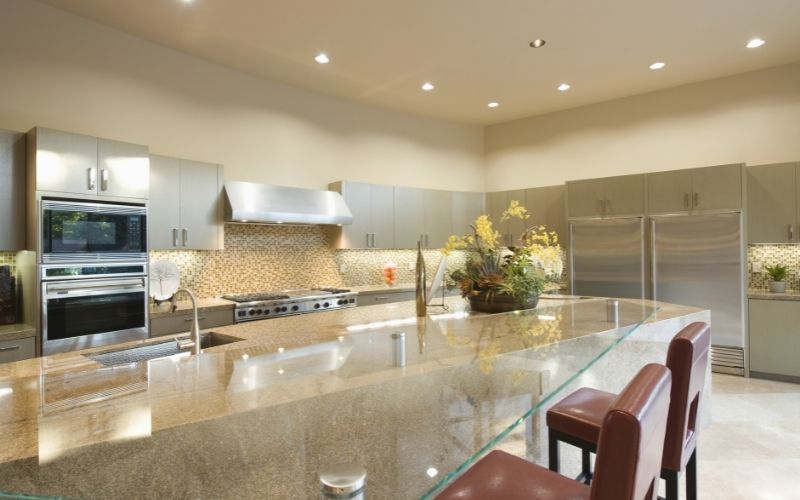
Credit: www.bazzsmarthome.ca
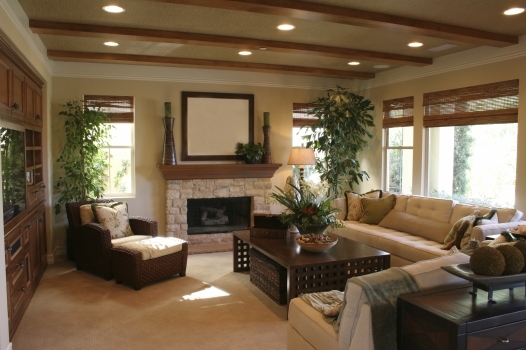
Credit: blog.recessedlighting.com
Frequently Asked Questions
How Many Recessed Lights Do I Need For A 12×12 Room?
For a 12×12 room, use four to six recessed lights. Space them evenly for balanced illumination. Consider bulb brightness and room use. Adjust based on personal preference and room function.
How Many Can Lights Should I Put In My Room?
Determine the number of can lights by calculating room size and desired brightness. Typically, use one light per 4-6 square feet. Adjust based on ceiling height and light type. Consider layering with other lighting sources for balanced illumination. Always consult a professional for personalized advice.
Should I Use 4 Or 6 Recessed Lights In Bedroom?
Use 4 recessed lights for smaller bedrooms, around 10×10 feet. Opt for 6 lights in larger rooms, like 12×12 feet or bigger, for balanced illumination. Consider room layout and personal lighting preference to decide the best number. Proper placement enhances ambiance and functionality.
What Is The Spacing For Can Lights?
Space can lights about 4 to 6 feet apart. Consider ceiling height and room size for optimal brightness. Proper spacing prevents shadows and ensures even lighting distribution. Adjust spacing for specific tasks or ambiance needs.
How Do I Calculate The Number Of Can Lights Needed?
Measure room size. Consider light spacing and ceiling height. Multiply length by width. Use results to decide.
Conclusion
Choosing the right number of can lights transforms any room. Balance the number and placement for optimal lighting effects. Consider room size and purpose when deciding the number of lights. Too many can lights create glare; too few leave dark spots.
Always test different setups to find the best fit. Light color and bulb type also impact the overall ambiance. A well-lit room enhances comfort and functionality. Adjust as needed to meet changing needs. Make informed decisions to achieve your desired lighting goal.


